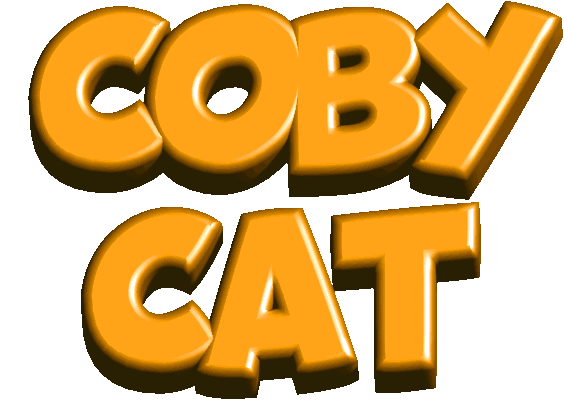Food in Belgium
Ah, food in Belgium. As a Belgian who needs food to survive, I can confidently say that I have quite a bit of experience with this subject. Now, if you've ever read about Belgian cuisine before, you might have come across fancy articles discussing our posh, high-end dining, our refined chocolates, our well-regarded beers, our claims about the origins of french fries, and other distinctive culinary traditions. But on my website, I want to focus on the less refined food that the average person in the middle class loves to indulge in.
Fry shacks and food trucks
The heart and soul of Belgian fast food is the fry shack, known as frituur or frietkot in Dutch and friterie in French. On top of serving our beloved french fries, these independently-owned fast food joints can capitalize on the recognizability of certain snack staples, with the most essential being the frikandel. Some other popular items at fry shacks include the Bicky Burger (which will be discussed in detail later on), satay, and cervelat.
With its soft, thin crust encasing mechanically separated meat, the Dutch frikandel is the most popular snack in Belgian and Dutch fast food. A variation with a crunchier crust is known as the viandel. Cut open a frikandel, fill it with mayonnaise, ketchup, and minced onions, and you get the frikandel special.
Originally an Indonesian dish, Dutch colonialism introduced satay (spelled as saté in Dutch and French) to the Low Countries. In its fry shack form, it's quite far removed from its origins. It's a wooden skewer with a sequence of meat, onion slices, and bell pepper slices.
This cervelat, cervela, or lookworst (garlic sausage), is a Flemish version of the renowned Swiss cervelat sausage. They can be eaten raw or fried, but when fried, ridges are usually cut into them.
To compete with the Happy Meal at McDonald's, and its competitors' equivalents, Flemish fry shacks offer the Smulllbox (from the Dutch verb smullen, meaning to feast or eat quickly), featuring characters from the Belgian entertainment company Studio 100.
Sauces are a crucial component of the fry shack experience, and many Belgians have strong opinions about why their preferred sauce is the best. Here are some of the most prominent condiments:
- Mayonnaise is the default choice. It's an emulsion of oil, egg yolk, vinegar, with a dash of mustard for flavor. There are numerous different brands with flavors that vary enough to inspire both loyalty and scorn.
- Tomato ketchup, at home often in Heinz bottles that are globally known, though fry shacks don't shy away from different brands.
- Curry ketchup adds curry spices into the mix. It is also very popular in Germany.
- Tartar sauce combines capers, pickles and herbs with mayo. Many fry shacks have their own recipes to distinguish themselves from competitors.
- Andalouse sauce is mayo with tomatoes and spices. First brought to market by sauce manufacturer La William, it was inspired by the flavors of the Spanish gazpacho soup.
- Cocktail sauce combines mayo and ketchup with a dash of whiskey. It originated as a sauce for dishes such as shrimp cocktails.
A special case is Flemish beef stew, which is served as both a sauce and a dish in fry shacks, but is also a common dish in bistros and restaurants. It's basically beef and onions stewed in brown beer.
At every weekly market or event, you'll find food trucks, with the most ubiquitous being the hamburger truck. They usually sell a certain type of hamburger, but they also often offer Bicky Burgers, both of which I will discuss.
Fastfood chains
Foreign fast-food chains are well-represented in the Belgian market, and some even offer their own interpretations of Belgian cuisine (which I may cover in a future update of this page). Belgium also had its own McDonald's competitor, Quick. While this fast-food chain is still in operation and likely won't disappear, it is now owned by Burger King, and temporary menu items are shared.
Beyond burgers and fries, the most prominent fast-food chain is Panos, which offers standardized versions of the typical sandwiches found in independently owned sandwich bars, along with pastries.
Currently, the major battleground in the Belgian fast-food market is fried chicken. The American chain KFC has entered the market but is facing stiff competition from BelChicken, a local chain founded by a Turkish-Belgian entrepreneur. Chick&Cheez is another competitor, which is operated by the Belgian franchise holder of Burger King and Quick but is struggling to get off the ground.
Burgers
Food truck burger
This is the type of burger you're almost certain to find at your typical, not-so-fancy food truck. A popular variation is the cheeseburger, which includes a slice of cheese.
The bun of the typical food truck hamburger is called a pistolet. This is very similar to a baguette, with a crunchy exterior and a light, airy interior. Except, of course, it's in the shape of a rounded bread roll.
While ketchup is the most common condiment, many people also request mayonnaise to accompany it.
Very soft fried onions are the standard topping, although you usually need to request them specifically (or ask for them to be left off), just like with the sauce.
Unlike the patty from fast-food chains and proper restaurants, fry shacks and food trucks will typically serve you something quite different.
Except for its shape, it is identical to the frikandel sausage we discussed earlier. In some parts of Belgium, a frikandel is simply referred to as a long hamburger.
Bicky Burger
This is a particular kind of burger that's wormed its way into most fry shacks and many food trucks. The burgers are supposed to be made with the manufacturer's ingredients, and the company behind them regularly launches campaigns to alert citizens about fake Bicky Burgers.
This is a classic bun with sesame seeds. It's supposed to be lightly roasted, but in my experience, it's usually either completely untoasted (and thus very mushy) or way overdone.
There's a handful of crispy roasted onions, specifically (but in practice rarely) the ones from Bicky-branded bulk bags.
The fact that these are cucumber salad slices and not pickles is typically a big part of Bicky's awareness campaigns. I'm not sure if I've ever been served the correct slices, and if I have, I can't tell the difference.
The branded Bicky sauces are hot sauce, tomato sauce, and dressing. That the tomato sauce is often substituted with ketchup is another concern for the Bicky brand.
This is, of course, also a specific Bicky patty. They are often substituted with the typical frikandel patty, and I'm not sure if there's a noticeable difference. Officially licensed variations of the Bicky Burger come with chicken-based, fish-based, or vegetarian patties.
Alright, so your food truck owner acquired all the authentic Bicky ingredients at a premium price. Are you ready to enjoy your officially licensed Bicky Burger now? Of course not! It needs to be served in the right type of box or wrapper, with suitable branding (and cost).
And make sure there's no slice of cheese in it! The Bicky brand disapproves of the unauthorized Bicky Cheese served in many fry shacks.
The Giant
While Quick offers the classic hamburgers and cheeseburgers like you'd expect from a fast-food chain, its also has a signature burger, its equivalent to McDo's Big Mac and Burger King's Whopper. Its name is the Giant.
A fairly plain bun that's slightly roasted, without any sesame seeds.
Raw, minced onions and shredded lettuce to add some freshness to your bites.
The Giant sauce is believed to be some sort of mixture of mayonnaise, ketchup, mustard, paprika, onions, pickles, and capers.
Two proper thin patties sandwiching a slice of cheddar.
Sandwiches
Most independent sandwich bars offer a wide variety of sandwiches, often boasting their own special creations of sometimes dubious culinary quality.
The core ingredient of the Belgian sandwich is a baguette, or something very similar it. Put some cheese, ham or a spread between it and you have a basic sandwich. Add some mayonnaise, vegetables (lettuce, tomato, and sometimes carrot and cucumber), and egg slices to that and you get what is called a Club or Smos sandwich.
Some common fillings or spreads include:
- Gouda cheese and/or ham
- Américain préparé, which is raw minced beef seasoned with spices.
- Chicken curry salad, which is made with mayonnaise, shredded chicken, and spices.
- Shredded or roasted chicken pieces with barbecue sauce. The important thing to note is that the sauce can vary in its composition. In some regions,it is the smoky brown sauce enjoyed around the world, while in other places, it is a completely different sweet-and-spicy orange sauce.
A uniquely Belgian sandwich is the Martino sandwich. This sandwich contains the américain préparé mentioned earlier, garnished with minced onions, pickles, Tabasco, Worcestershire sauce, and spices. Sometimes, anchovies are also added.
Waffles
You were probably starting to wonder when I'd address the big elephant in the room, namely Belgian waffles. That's the thing though: in Belgium, there are no Belgian waffles as such. There are instead two main types of waffles: Brussels waffles and Liège waffles.
What sets the rectangular Brussels waffle apart from the standard European waffle is how crispy and light it is, with its deep recesses making it an ideal receptacle for sauces or whipped cream.
It is likely that this waffle, which was shared with the world through various world fairs, inspired what Americans know today as Belgian waffles.
The Liège waffle, named after the eponymous city, is thick and moist. Its soft dough is filled with sugar crystals, some of which melt and deliver it a characteristic sticky and slightly caramelized coating.
Personally, it's my preferred choice among the two main types of Belgian waffles.
Candy
While the most common kind of candy you'll find in Belgium is Haribo, there are some specific Belgian types of candy I'd like to highlight here.
Napoleon bonbons
Napoleon bonbons are an all-candy twist on the classic bonbons made of chocolate. These are individually wrapped spherical hard candies filled with a sour substance in its core. Their most common fruit mix comes in the flavors of orange, apple, cherry, lemon, and pineapple
Cuberdons
This raspberry-flavored candy has a thick, gelatinous interior surrounded with a harder crust and is shaped like a cone.
In Dutch, these are often referred to as little noses (neuzekes), while in French they're nicknamed pastor's hats (chapeaux de curé).
Speculaas and speculoos
Speculaas and speculoos are two closely related biscuits popular in both Belgium and the Netherlands. Speculaas is the traditional version, featuring a blend of robust spices (cinnamon, nutmeg, ginger, cardamom, …) and is often baked into specific shapes. They are strongly associated with Sinterklaas, the Santa Claus of the Low Countries.
Later, some Belgian manufacturers sought to make the process more cost-efficient by cutting down on the spices, resulting in the variant known as speculoos. Speculoos is often paired with coffee, which led the leading producer Lotus to rebrand its product as Biscoff for international markets, short for biscuit with coffee. A spreadable speculoos paste is marketed in other countries as Biscoff cookie butter.
Further reading
For a look at the traditional and elaborate food customs of Belgium, which are fading away outside of expensive restaurants due to the understandable time constraints of dual-income couples, there's the excellent Everybody Eats Well in Belgium Cookbook by Ruth Van Waerebeek. More recently, it was republished with different illustrative material as The Taste of Belgium.
Regula Ysewijn, a judge on Flemish Bake-Off and author of remarkable works on British culinary history, has also penned Dark Rye and Honey Cake, a book delving into the history of traditional Belgian festival food. Another one of her books, Belgian Café Culture, chronicles the decline of Belgian cafés.
I also have another page on my website that covers common food in Belgium that is still perceived as foreign.

